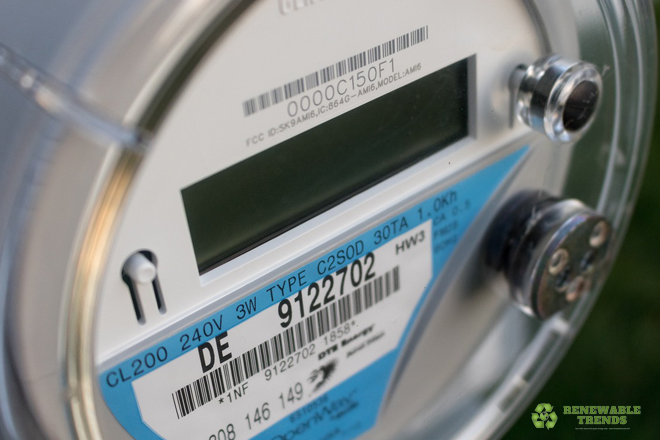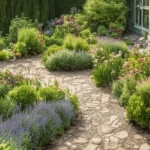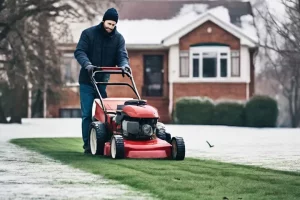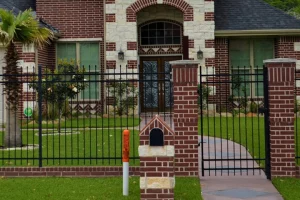
Are you looking for ways to contribute to a greener planet at home? Renewable Trends asked an expert what consumers can do to reduce their carbon footprint, starting with the garden.
A garden can consume a lot of energy. Here are some ideas to do something about it. 5 ways you can garden to your heart's content this spring and summer without worrying about energy bills and the planet!
In terms of saving water or detecting energy wasters in your home, you already know what to do. The garden, on the other hand, is a somewhat more complicated subject. You're not so sure where to start. Follow the guide.
1. Rainwater: ideal for the garden!
This water is free, so why not take advantage of it? Your ornamental plants and vegetable garden will benefit, and if you have a pool, you can refill it with rainwater as well. Did you know that a garden needs an average of 15 to 20 liters of water per square meter?
There are several solutions:
- a buried tub;
- an above-ground tank;
- an above-ground catch basin;
- an old-fashioned rain barrel.
The volume can range from a few hundred liters to as much as 10 000 liters (the maximum allowed by law). A buried tank requires extensive works. The price ranges from a few tens of euros for the smallest models to over 5000 euros for the largest variants, which require earthworks.
2. Learn from professional gardeners
There are several professional eco-approaches that will work for you too and save you money.
Choose local plants that don't need much water
Choose plants that require little or no water. These do exist! Most of the time, these are so-called succulents. We will mention some examples:
- portulaca
- sedum
- gaillardia
- cacti
- lavender
- oleander
- bougainvillea
Also, preferably choose local species adapted to our climate.
Of course, a lawn looks nicer when it's fresh green. But don't go spraying when your grass starts to yellow! Because Mother Nature has things perfectly under control. As soon as it starts raining again, your lawn will be green again in no time.
Really can't live with a parched lawn? Then sow a grass variety that can withstand drought. Then the grass will stay green even during a heat wave.
Good to know: don't mow the grass too short. The more often you mow, the more often you have to keep mowing. Unless you leave it to a robotic mower, of course. Discover the 7 criteria for choosing the right robotic mower.
Protect the ecosystem
Leave a piece of the garden fallow. The flora and fauna can do their own thing there. And you don't have to look after this place – so there's no need to water!
Protect the soil
A good idea: scatter corn cuttings, bark, dead leaves, wood chips and so on at the base of your plants. This mulch layer helps the soil retain moisture. That way you won't have to water as much!
Water early in the morning or in the evening
Especially don't do this during the hottest part of the day, as much of the water will evaporate before it reaches the soil. Also, loosen the soil a bit before spraying: that way the water penetrates better. And aim especially at the base of your plants! Drop-by-drop spraying is recommended. We'll show you how to make your own drip hose system.
3. Choose LED lighting or a solar-powered lamp Leds in the garden
You can choose between LED bulbs with or without cables. The former are connected to your home's 230 V grid; the latter operate at low voltage and are easier to install.
In both cases, the lifespan is about 40,000 to 50,000 hours and energy consumption is limited. So you can leave them on longer to fully enjoy the long summer evenings. Choose LED bulbs that are water resistant (IP higher than 65).
Which strength is best?
For a dining area on the terrace: wall or pendant lights of 10 to 20 watts with warm white light.
For a staircase: recessed spotlights from 1 to 5 watts, spaced at fixed intervals for a perfectly defined path. The light temperature can be cold or warm white.
For the garage: a directional spotlight with motion detector with a strength of 20 to 30 watts and cold white light.
For a flower bed: a 10- to 30-watt projector in bluish cold white or neutral white light.
For a facade: upward facing wall lights of 10 W per 15 m2. Warm or cold white or colored LEDs, but always in harmony with the color of your facade!
For your information, a 10W LED bulb gives as much light as a 50W halogen bulb! While consuming 80 times less! For truly rustic LED lighting, turn empty cans into fun designer lamps.
Solar powered garden lighting
Also consider lights with solar panels. The technology has greatly improved, so today you can use them to light up any part of the garden. Spot, wall lamp, projector, light string, delineator: solar-powered lamps come in all shapes and sizes. Plus, they’re easy to install and require minimal maintenance, making them an eco-friendly and cost-effective choice. Solar-powered lamps can also create a warm, nostalgic atmosphere that can cleverly make your new garden older, blending modern functionality with timeless charm. With their versatility and convenience, they’re an excellent option for both decorative and practical lighting needs in your outdoor space.
Some models have an output of up to 800 lumens, which is as strong as a 70 W halogen bulb! And it won't cost you a penny!
4. Cooking on a solar barbecue
A solar barbecue is more environmentally friendly and costs less money than a gas barbecue, an electric BBQ or a wood barbecue. It reaches a heat of up to 150°C. So it is fine to cook on that with some patience.
5. Use smart tools
A watering system with smart pots that measure the needs of your plants and alert you when they are thirsty. A BBQ that monitors the doneness of the meat to avoid burning. Smart plugs to turn your appliances on or off remotely. Technology is more than ever your best garden friend!
To save even more, we've listed the 5 energy guzzlers of the summer, complete with solutions to cope with them. Here's how to take an extra step toward a more carbon-neutral future.

James Smith is our editor. He is an accomplished and versatile news writer with over a decade of experience covering a wide range of topics, including politics, business, and real estate. Throughout his career, James has been dedicated to uncovering the truth and presenting unbiased, factual reporting to his audience.















